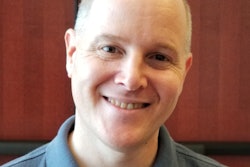
LONG BEACH, CA - Compared to other industries, healthcare has been slow to embrace data mining and analytics. But that will change, and when it does, the explosion of business intelligence will revolutionize medicine, said Paul Nagy, PhD, in a talk on Friday at the annual Society for Imaging Informatics in Medicine (SIIM) meeting.
Data analytics involves the analysis of massive volumes of information -- also known as big data -- to spot trends and predict future events before they occur. Some of big data's most promising applications are in medicine, as healthcare systems could leverage the patient information being collected with healthcare IT systems to operate more efficiently and provide better care at a lower cost.
However, in healthcare, big data so far has fallen short of the promise, compared with the advances being made in other industries, according to Nagy, who is director of quality in the radiology department at Johns Hopkins University. For example, HP already can use data analytics to estimate which employees will quit in the next six months, while Target can predict if a customer is pregnant based on her purchasing history, Nagy pointed out.
Why data analytics?
With all the challenges that radiology facilities are already facing, why should they invest in data analytics? Nagy answered his own question by pointing out that healthcare is moving from a fee-for-service model to a structure based on accountable care organizations (ACOs). Healthcare facilities are going to need to learn much more about their patient populations to deliver effective care, he said.
In addition, radiology is "insanely complex," Nagy said, and administrators need to have better analytics capability to steer the operation and change effectively. Finally, facilities such as Johns Hopkins are ramping up quality improvement initiatives that need data to function effectively and to help administrators make proper decisions.
"If you don't have data, what do you have?" he asked. "You have emotion."
How should imaging facilities prepare for the coming era of big data? Nagy made several recommendations:
- Take an inventory of your IT personnel's skills to learn what tools they know how to use.
- Create virtual teams that unite personnel who might have complementary skills but who are isolated within different silos in your enterprise.
- Ensure that your analytics functions are not based in the IT department.
"IT is where data comes from, but IT does not understand the data," Nagy said. "To really understand the data, you have to be closer to operations."
Data analytics needs to be used for information that is actionable immediately, such as letting a radiologist know that he or she has 20 reports pending that haven't been signed, and the backup is causing a delay in the department.
"Data is an isotope: Its value goes down exponentially," he said. "Having actionable information is key."
If a department is viewed as an organism, information is its energy source, and how efficiently it uses data is key to its metabolism. A primary goal in data analytics should always be to improve information metabolism to make better decisions, Nagy said.
Commercial advanced data visualization tools are available that can help sites move their data out of Excel spreadsheets and into charts, graphs, and other visually appealing formats to make data easier to understand and put into action, Nagy advised. One tool, called Pivot, is available as a plug-in for Excel.
Bumps in the road
But there will be bumps in the road on the way to big data. The biggest is what Nagy calls a brain drain of skilled personnel into other industries that have a head start on healthcare in data analytics, such as vendors and Wall Street, where analysts can make two to three times as much money.
"We are going to have a massive problem retaining analytics talent in healthcare," he said.
In fact, the need for skilled data-analytics personnel has become so acute that the Harvard Business Review in 2012 named "data scientist" as the sexiest job of the 21st century. The demand is being driven by the fact that our ability to gather massive amounts of data has outstripped our ability to analyze it, he said. Hopkins is already having problems recruiting and retaining key personnel, and Nagy predicts this will be an issue for the next five years.
Also, data analytics isn't cheap; it requires investments in both products and personnel that can be difficult to justify to hospital administrators and department heads in an era of restricted capital equipment budgets.
To overcome such doubts, Nagy pitches data analytics to skeptics as a development that could be as revolutionary to medicine as the invention of the microscope in the 1600s, which opened up a new world of information to physicians and scientists. He views data analytics as a "macroscope" that will be the next important imaging modality in radiology.
"What's the next big imaging device that's going to help us discover the invisible things that will help us serve our patients better?" Nagy asked. "It's going to be analytics. It's going to help us use our scanners better, help us deliver [imaging] more efficiently, and provide better access and better service."



















